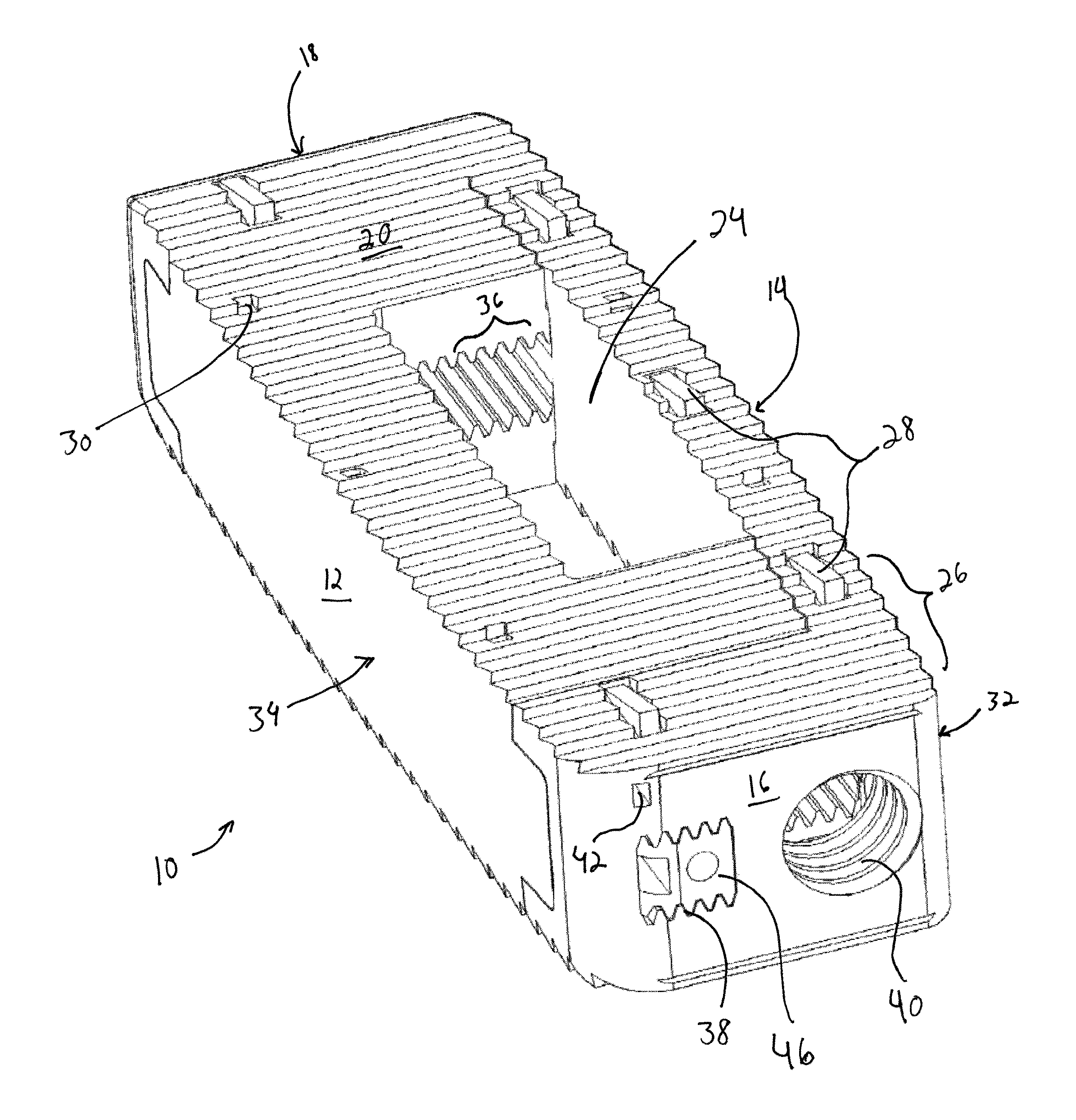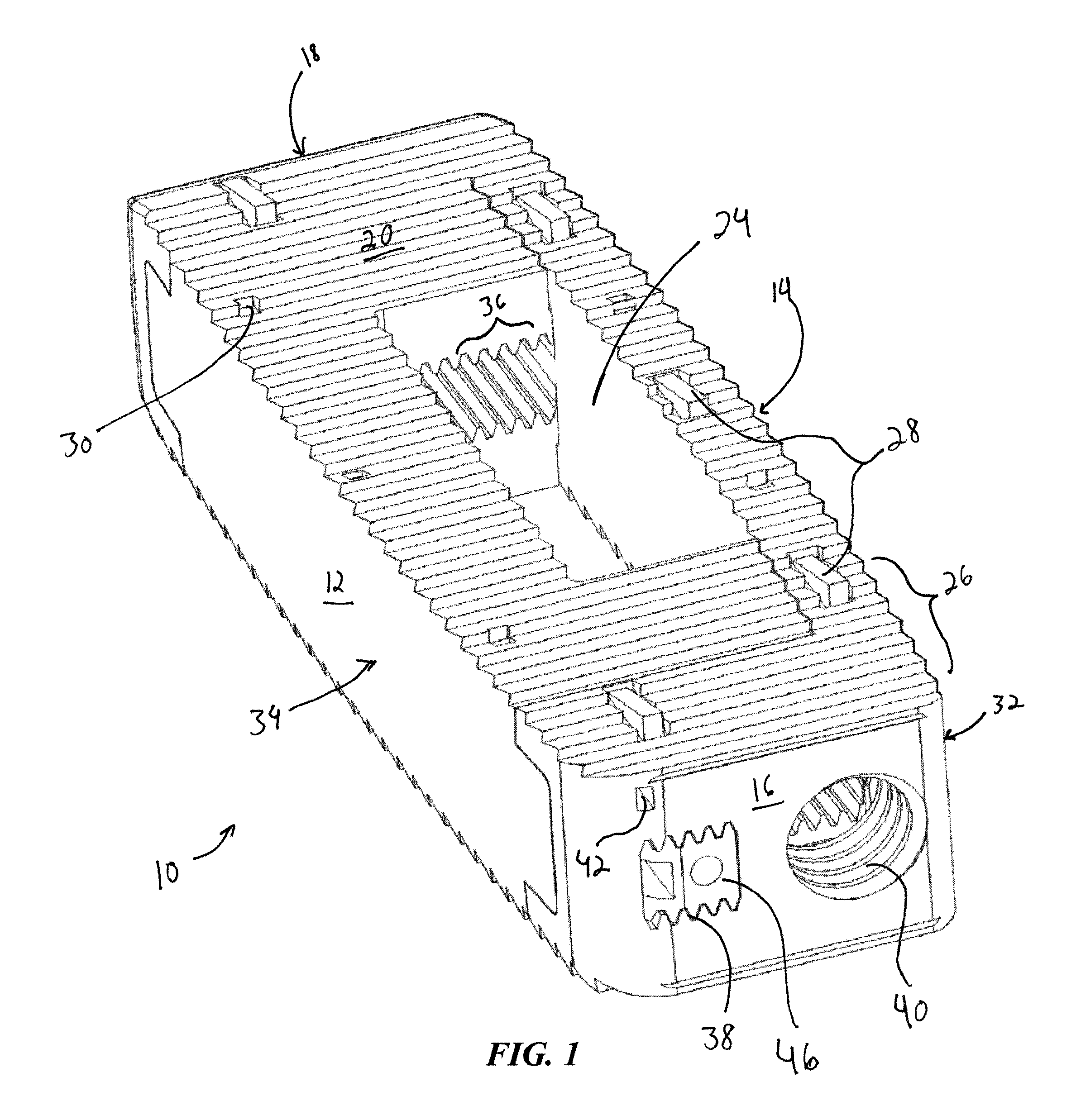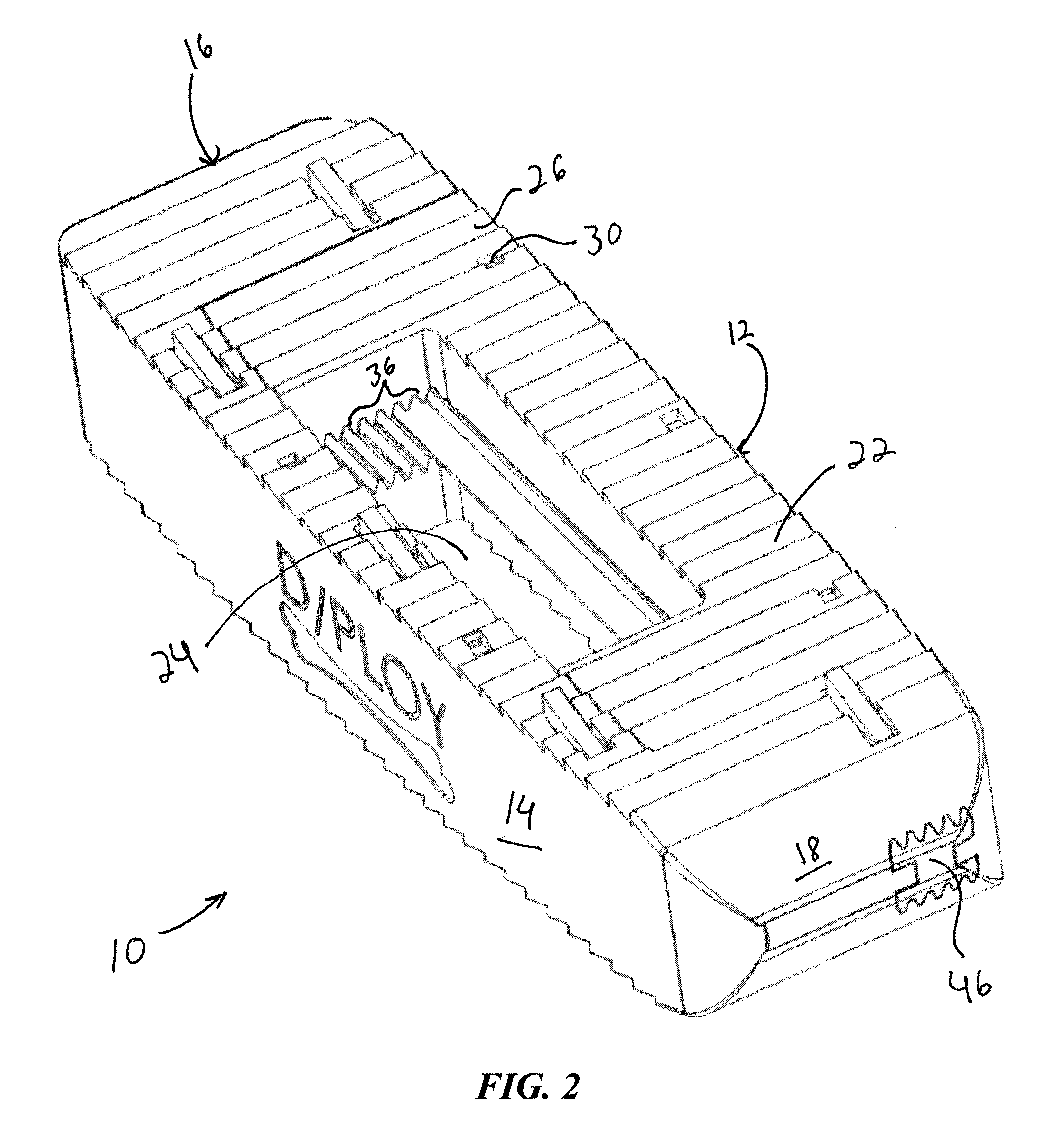Laterally expandable spinal prosthesis
a spinal prosthesis and lateral expansion technology, applied in the field of spinal prosthesis and orthopedic instruments, can solve the problems of reducing the height of the disc space affecting the function of the spinal disc, etc., and achieve the effect of increasing the width of the prosthesis
- Summary
- Abstract
- Description
- Claims
- Application Information
AI Technical Summary
Benefits of technology
Problems solved by technology
Method used
Image
Examples
Embodiment Construction
[0019]The present invention provides a prosthesis that can be easily inserted in accordance with a specific pathway or approach, such as a lateral approach, and that further eases obtaining a desired prosthesis position and resulting spinal segment stabilization. In particular, the prosthesis disclosed herein provides an adjustable, dynamic aspect ratio (i.e., the ratio of the width of the implant to its height) that can be adjusted to suit a varying range of surgical sites of different sizes in different patients. The adjustable size further allows a reduced, minimal profile during insertion while also allowing for expansion once positioned in a surgical site that may provide sufficient support and stabilization to negate a need for any additional posterior or anterior fusion hardware.
[0020]Now referring to FIGS. 1-2, a spinal prosthesis 10 is provided, where the spinal prosthesis 10 may include a prosthesis body generally defining a posterior wall 12, an anterior wall 14, a proxim...
PUM
 Login to View More
Login to View More Abstract
Description
Claims
Application Information
 Login to View More
Login to View More - R&D
- Intellectual Property
- Life Sciences
- Materials
- Tech Scout
- Unparalleled Data Quality
- Higher Quality Content
- 60% Fewer Hallucinations
Browse by: Latest US Patents, China's latest patents, Technical Efficacy Thesaurus, Application Domain, Technology Topic, Popular Technical Reports.
© 2025 PatSnap. All rights reserved.Legal|Privacy policy|Modern Slavery Act Transparency Statement|Sitemap|About US| Contact US: help@patsnap.com



